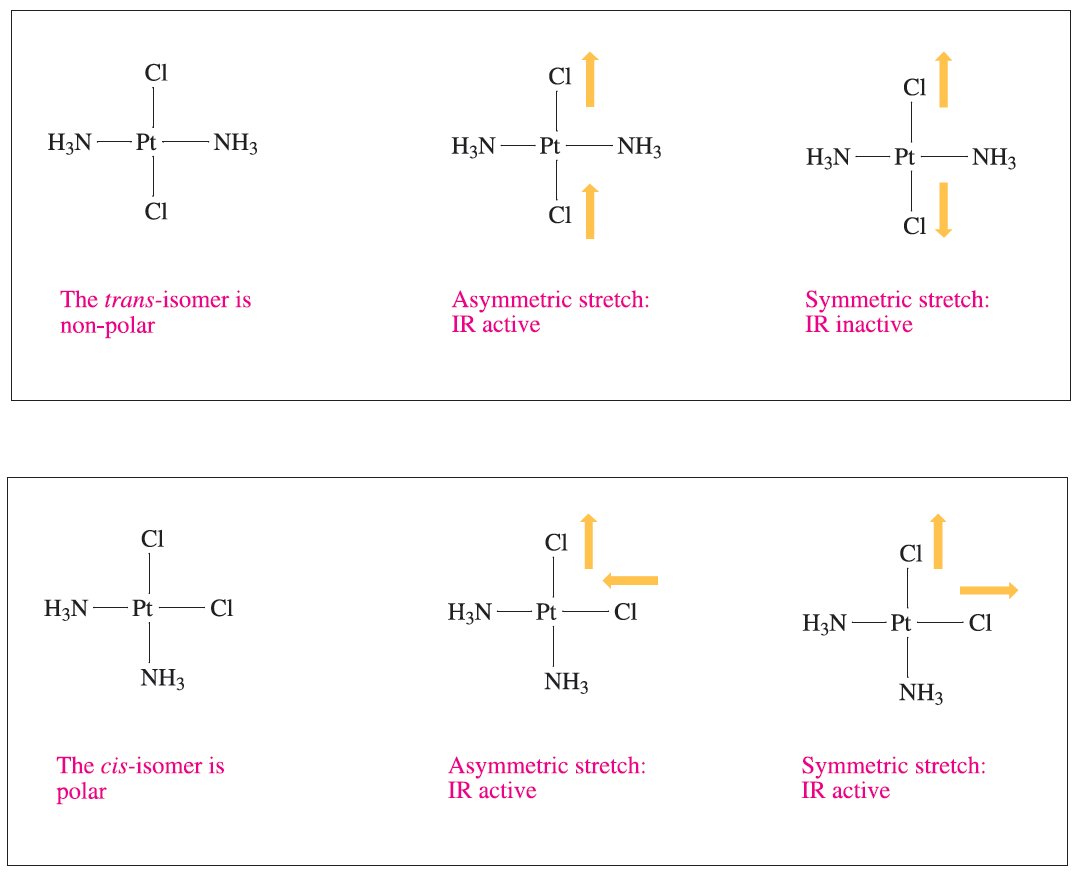
Stereoisomerism: geometrical isomers
 المؤلف:
CATHERINE E. HOUSECROFT AND ALAN G. SHARPE
المؤلف:
CATHERINE E. HOUSECROFT AND ALAN G. SHARPE
 المصدر:
INORGANIC CHEMISTRY
المصدر:
INORGANIC CHEMISTRY
 الجزء والصفحة:
2th ed p 549
الجزء والصفحة:
2th ed p 549
 28-2-2017
28-2-2017
 1178
1178
Stereoisomerism: geometrical isomers
Distinguishing between cis- and trans-isomers of a square planar complex or between mer- and fac-isomers of an octahedral complex is most unambiguously confirmed by structural determinations using single-crystal X-ray diffraction. Vibrational spectroscopy may also be of assistance. For example, illustrates that the asymmetric stretch for the PtCl2 unit in [Pt(NH3)2Cl2] is IR active for both the trans- and cis-isomers, but the symmetric stretch is IR active only for the cis-isomer.

Fig. 1.1 The trans- and cis-isomers of the square planar complex [PtCl2(NH3)2] can be distinguished by IR spectroscopy. The selection rule for an IR active vibration is that it must lead to a change in molecular dipole moment.
The existence of ions or molecules in different structures (e.g. trigonal bipyramidal and square-based pyramidal [Ni(CN)5]3-) is just a special case of geometrical isomerism. In the cases of, for example, tetrahedral and square planar [NiBr2(PBzPh2)2] (Bz = benzyl), the two forms can be distinguished by the fact that they exhibit different magnetic. To complicate matters, square planar [NiBr2(PBzPh2)2] may exist as either trans- or cis-isomers.
 الاكثر قراءة في كيمياء العناصر الانتقالية ومركباتها المعقدة
الاكثر قراءة في كيمياء العناصر الانتقالية ومركباتها المعقدة
 اخر الاخبار
اخر الاخبار
اخبار العتبة العباسية المقدسة


